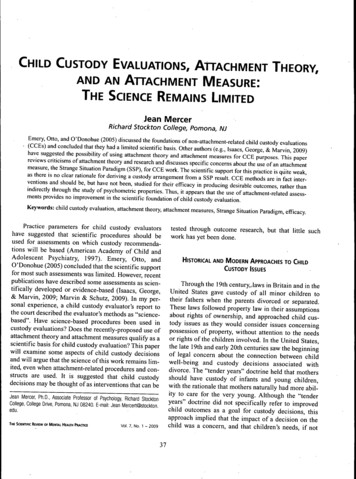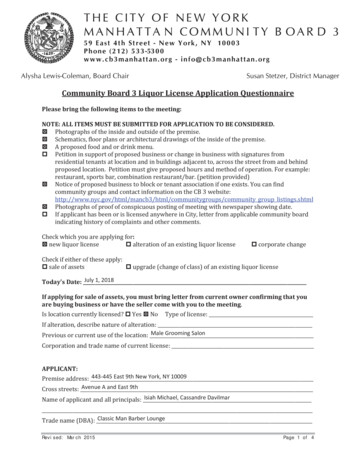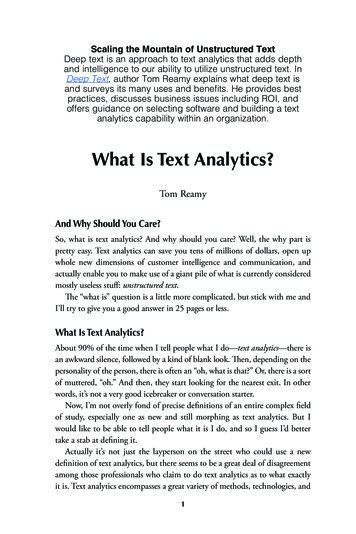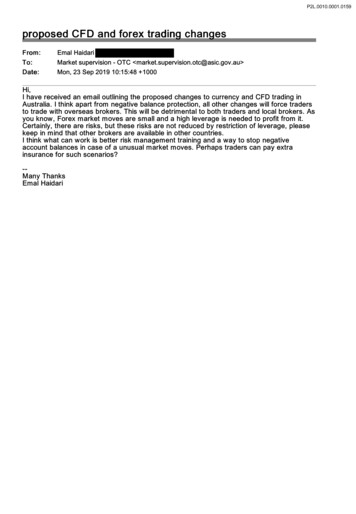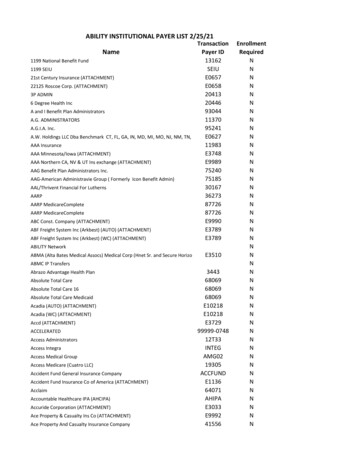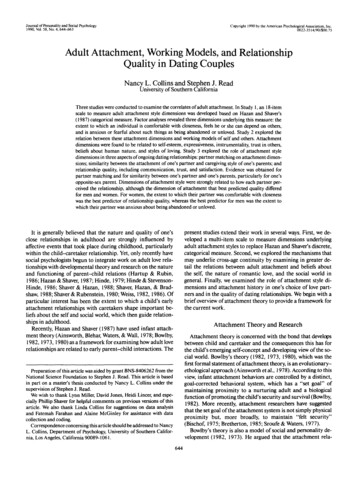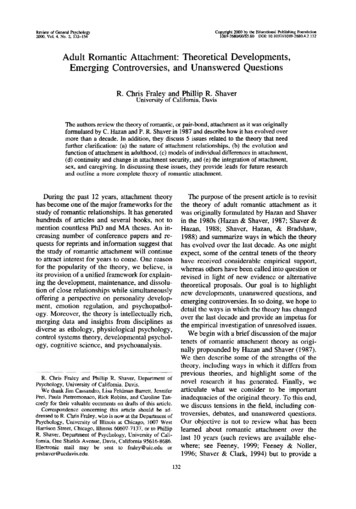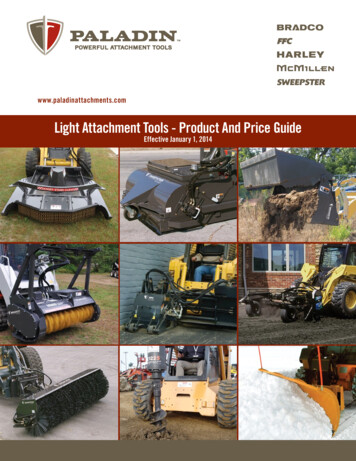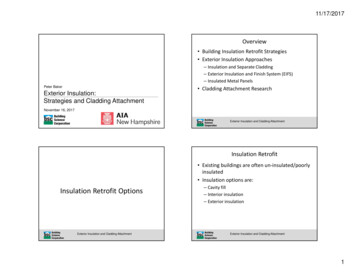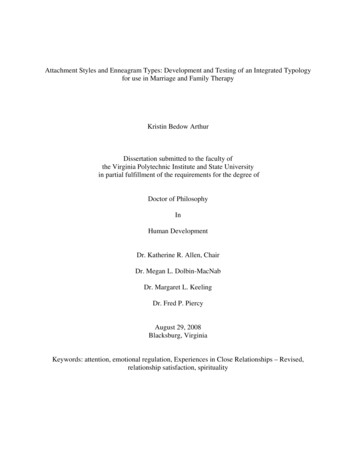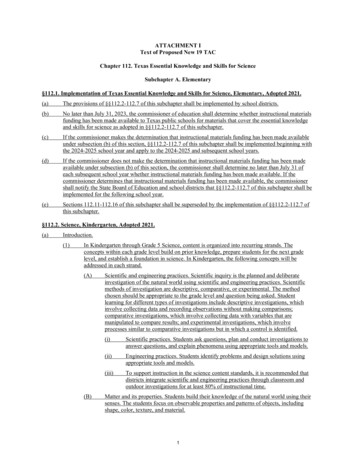
Transcription
ATTACHMENT IText of Proposed New 19 TACChapter 112. Texas Essential Knowledge and Skills for ScienceSubchapter A. Elementary§112.1. Implementation of Texas Essential Knowledge and Skills for Science, Elementary, Adopted 2021.(a)The provisions of §§112.2-112.7 of this subchapter shall be implemented by school districts.(b)No later than July 31, 2023, the commissioner of education shall determine whether instructional materialsfunding has been made available to Texas public schools for materials that cover the essential knowledgeand skills for science as adopted in §§112.2-112.7 of this subchapter.(c)If the commissioner makes the determination that instructional materials funding has been made availableunder subsection (b) of this section, §§112.2-112.7 of this subchapter shall be implemented beginning withthe 2024-2025 school year and apply to the 2024-2025 and subsequent school years.(d)If the commissioner does not make the determination that instructional materials funding has been madeavailable under subsection (b) of this section, the commissioner shall determine no later than July 31 ofeach subsequent school year whether instructional materials funding has been made available. If thecommissioner determines that instructional materials funding has been made available, the commissionershall notify the State Board of Education and school districts that §§112.2-112.7 of this subchapter shall beimplemented for the following school year.(e)Sections 112.11-112.16 of this subchapter shall be superseded by the implementation of §§112.2-112.7 ofthis subchapter.§112.2. Science, Kindergarten, Adopted 2021.(a)Introduction.(1)In Kindergarten through Grade 5 Science, content is organized into recurring strands. Theconcepts within each grade level build on prior knowledge, prepare students for the next gradelevel, and establish a foundation in science. In Kindergarten, the following concepts will beaddressed in each strand.(A)(B)Scientific and engineering practices. Scientific inquiry is the planned and deliberateinvestigation of the natural world using scientific and engineering practices. Scientificmethods of investigation are descriptive, comparative, or experimental. The methodchosen should be appropriate to the grade level and question being asked. Studentlearning for different types of investigations include descriptive investigations, whichinvolve collecting data and recording observations without making comparisons;comparative investigations, which involve collecting data with variables that aremanipulated to compare results; and experimental investigations, which involveprocesses similar to comparative investigations but in which a control is identified.(i)Scientific practices. Students ask questions, plan and conduct investigations toanswer questions, and explain phenomena using appropriate tools and models.(ii)Engineering practices. Students identify problems and design solutions usingappropriate tools and models.(iii)To support instruction in the science content standards, it is recommended thatdistricts integrate scientific and engineering practices through classroom andoutdoor investigations for at least 80% of instructional time.Matter and its properties. Students build their knowledge of the natural world using theirsenses. The students focus on observable properties and patterns of objects, includingshape, color, texture, and material.1
(b)(C)Force, motion, and energy. Students explore the location, motion, and position of objectsand investigate the importance of light energy as it relates to the students' everyday lives.Students focus on demonstrating light energy sources and their effect on objects.(D)Earth and space. Patterns are recognizable in the natural world and among objects in thesky. Students understand that weather, seasons of the year, and day and night are repeatedpatterns. Materials found on Earth can be used and classified.(E)Organisms and environments. All living organisms satisfy basic needs throughinteractions with nonliving things and living organisms, and they have structures andfunctions that help them survive within their environments. Students investigate the lifecycle of plants and identify likenesses between parents and young.(2)Nature of science. Science, as defined by the National Academy of Sciences, is the "use ofevidence to construct testable explanations and predictions of natural phenomena, as well as theknowledge generated through this process." This vast body of changing and increasing knowledgeis described by physical, mathematical, and conceptual models. Students should know that somequestions are outside the realm of science because they deal with phenomena that are not currentlyscientifically testable.(3)Scientific hypotheses and theories. Students are expected to know that:(A)hypotheses are tentative and testable statements that must be capable of being supportedor not supported by observational evidence. Hypotheses of durable explanatory powerthat have been tested over a wide variety of conditions are incorporated into theories; and(B)scientific theories are based on natural and physical phenomena and are capable of beingtested by multiple independent researchers. Unlike hypotheses, scientific theories are wellestablished and highly reliable explanations, but they may be subject to change as newareas of science and new technologies are developed.(4)Science and social ethics. Scientific decision making is a way of answering questions about thenatural world involving its own set of ethical standards about how the process of science should becarried out. Students distinguish between scientific decision-making practices and ethical andsocial decisions that involve science.(5)Recurring themes and concepts. Science consists of recurring themes and making connectionsbetween overarching concepts. Recurring themes include structure and function, systems, models,and patterns. All systems have basic properties that can be described in space, time, energy, andmatter. Change and constancy occur in systems as patterns and can be observed, measured, andmodeled. Models have limitations but provide a tool for understanding the ideas presented.Students analyze a system in terms of its components and how these components relate to eachother, to the whole, and to the external environment.(6)Statements containing the word "including" reference content that must be mastered, while thosecontaining the phrase "such as" are intended as possible illustrative examples.Knowledge and skills.(1)Scientific and engineering practices. The student asks questions, identifies problems, and plansand safely conducts classroom, laboratory, and field investigations to answer questions, explainphenomena, or design solutions using appropriate tools and models. The student is expected to:(A)ask questions and define problems based on observations or information from text,phenomena, models, or investigations;(B)use scientific practices to plan and conduct simple descriptive investigations and useengineering practices to design solutions to problems;(C)identify, describe, and demonstrate safe practices during classroom and fieldinvestigations as outlined in Texas Education Agency-approved safety standards;2
(2)(3)(4)(5)(D)use tools, including hand lenses, goggles, trays, cups, bowls, sieves or sifters, notebooks,terrariums, aquariums, samples (rocks, sand, soil, loam, gravel, clay, seeds, and plants),windsock, demonstration thermometer, rain gauge, straws, ribbons, non-standardmeasuring items, blocks or cubes, tuning fork, various flashlights, small paper cups,items that roll, noise makers, hot plate, opaque objects, transparent objects, foil pie pans,foil muffin cups, wax paper, [technology,] Sun-Moon-Earth model, and plant life cyclemodel to observe, measure, test, and compare;(E)collect observations and measurements as evidence;(F)record and organize data using pictures, numbers, words, symbols, and simple graphs;and(G)develop and use models to represent phenomena, objects, and processes or design aprototype for a solution to a problem.Scientific and engineering practices. The student analyzes and interprets data to derive meaning,identify features and patterns, and discover relationships or correlations to develop evidence-basedarguments or evaluate designs. The student is expected to:(A)identify basic advantages and limitations of models such as their size, properties, andmaterials;(B)analyze data by identifying significant features and patterns;(C)use mathematical concepts to compare two objects with common attributes; and(D)evaluate a design or object using criteria to determine if it works as intended.Scientific and engineering practices. The student develops evidence-based explanations andcommunicates findings, conclusions, and proposed solutions. The student is expected to:(A)develop explanations and propose solutions supported by data and models;(B)communicate explanations and solutions individually and collaboratively in a variety ofsettings and formats; and(C)listen actively to others' explanations to identify important evidence and engagerespectfully in scientific discussion.Scientific and engineering practices. The student knows the contributions of scientists andrecognizes the importance of scientific research and innovation on society. The student is expectedto:(A)explain how science or an innovation can help others; and(B)identify [what] scientists and engineers such as Isaac Newton, Mae Jemison, and YnesMexia [are] and explore what different scientists and engineers do.Recurring themes and concepts. The student uses recurring themes and concepts to makeconnections across disciplines. The student is expected to:(A)identify and use patterns to describe phenomena or design solutions;(B)investigate and predict cause-and-effect relationships in science;(C)describe the properties of objects in terms of relative size (scale) and relative quantity;(D)examine the parts of a whole to define or model a system;(E)identify forms of energy and properties of matter;(F)describe the relationship between the structure and function of objects, organisms, andsystems; and(G)describe how factors or conditions can cause objects, organisms, and systems to eitherchange or stay the same.3
(6)Matter and its properties. The student knows that objects have physical properties that determinehow they are described and classified. The student is expected to identify and record observablephysical properties of objects, including shape, color, texture, and material, and generate ways toclassify objects.(7)Force, motion, and energy. The student knows that forces cause changes in motion and position ineveryday life. The student is expected to describe and predict how a magnet interacts with variousmaterials and how magnets can be used to push or pull.(8)Force, motion, and energy. The student knows that energy is everywhere and can be observed ineveryday life. The student is expected to:(9)(10)(A)communicate the idea that objects can only be seen when a light source is present andcompare the effects of different amounts of light on the appearance of objects; and(B)demonstrate and explain that light travels through some objects and is blocked by otherobjects, creating shadows.Earth and space. The student knows that there are recognizable patterns in the natural world andamong objects in the sky. The student is expected to:(A)identify, describe, and predict the patterns of day and night and their observablecharacteristics; and(B)observe, describe, and illustrate the Sun, Moon, stars, and objects in the sky such asclouds.Earth and space. The student knows that the natural world includes earth materials and systemsthat can be observed. The student is expected to:(A)describe and classify rocks by the observable properties of size, shape, color, and texture;(B)observe and describe weather changes from day to day and over seasons; and(C)identify evidence that supports the idea that air is all around us and demonstrate that windis moving air using items such as a windsock, pinwheel, or ribbon.(11)Earth and space. The student knows that earth materials are important to everyday life. Thestudent is expected to observe and generate examples of practical uses for rocks, soil, and water.(12)Organisms and environments. The student knows that plants and animals depend on theenvironment to meet their basic needs for survival. The student is expected to:(13)(A)observe and identify the dependence of plants on air, sunlight, water, nutrients in the soil,and space to grow; and(B)observe and identify the dependence of animals on air, water, food, space, and shelter.Organisms and environments. The student knows that organisms resemble their parents and havestructures and undergo processes that help them interact and survive within their environments.The student is expected to:(A)identify the structures of plants, including roots, stems, leaves, flowers, and fruits;(B)identify the different structures that animals have that allow them to interact with theirenvironment such as seeing, hearing, moving, and grasping objects;(C)identify and record the changes from seed, seedling, plant, flower, and fruit in a simpleplant life cycle; and(D)identify ways that young plants resemble the parent plant.§112.3. Science, Grade 1, Adopted 2021.(a)Introduction.4
(1)In Kindergarten through Grade 5 Science, content is organized into recurring strands. Theconcepts within each grade level build on prior knowledge, prepare students for the next gradelevel, and establish a foundation in science. In Grade 1, the following concepts will be addressedin each strand.(A)Scientific and engineering practices. Scientific inquiry is the planned and deliberateinvestigation of the natural world using scientific and engineering practices. Scientificmethods of investigation are descriptive, comparative, or experimental. The methodchosen should be appropriate to the grade level and question being asked. Studentlearning for different types of investigations include descriptive investigations, whichinvolve collecting data and recording observations without making comparisons;comparative investigations, which involve collecting data with variables that aremanipulated to compare results; and experimental investigations, which involveprocesses similar to comparative investigations but in which a control is identified.(i)Scientific practices. Students ask questions, plan and conduct investigations toanswer questions, and explain phenomena using appropriate tools and models.(ii)Engineering practices. Students identify problems and design solutions usingappropriate tools and models.(iii)To support instruction in the science content standards, it is recommended thatdistricts integrate scientific and engineering practices through classroom andoutdoor investigations for at least 80% of instructional time.(B)Matter and its properties. Students build their knowledge of the natural world using theirsenses. Students focus on observable properties and patterns of objects, including largerand smaller, heavier and lighter, shape, color, and texture. The students understandchanges in materials caused by heating and cooling.(C)Force, motion, and energy. Students know that force and motion are related and thatenergy exists in many forms as a part of everyday life. Magnetism interacts with variousmaterials and can be used as a push and pull. The students investigate the importance ofheat and focus on changes caused by heating and cooling.(D)Earth and space. Patterns, cycles, and systems are recognizable in the natural world andamong objects in the sky. Students make informed choices by understanding weather andseasonal patterns. Students understand that natural resources on Earth, including rocks,soil, and water, are used by humans and can be conserved.(E)Organisms and environments. All living organisms interact with living and nonlivingthings within their environments and use structures to meet their basic needs. Studentsknow that organisms are interdependent and part of a food chain. The students investigatethe life cycle of animals and identify likenesses between parents and young.(2)Nature of science. Science, as defined by the National Academy of Sciences, is the "use ofevidence to construct testable explanations and predictions of natural phenomena, as well as theknowledge generated through this process." This vast body of changing and increasing knowledgeis described by physical, mathematical, and conceptual models. Students should know that somequestions are outside the realm of science because they deal with phenomena that are not currentlyscientifically testable.(3)Scientific hypotheses and theories. Students are expected to know that:(A)hypotheses are tentative and testable statements that must be capable of being supportedor not supported by observational evidence. Hypotheses of durable explanatory powerthat have been tested over a wide variety of conditions are incorporated into theories; and(B)scientific theories are based on natural and physical phenomena and are capable of beingtested by multiple independent researchers. Unlike hypotheses, scientific theories are wellestablished and highly reliable explanations, but they may be subject to change as newareas of science and new technologies are developed.5
(b)(4)Science and social ethics. Scientific decision making is a way of answering questions about thenatural world involving its own set of ethical standards about how the process of science should becarried out. Students distinguish between scientific decision-making practices and ethical andsocial decisions that involve science.(5)Recurring themes and concepts. Science consists of recurring themes and making connectionsbetween overarching concepts. Recurring themes include structure and function, systems, models,and patterns. All systems have basic properties that can be described in space, time, energy, andmatter. Change and constancy occur in systems as patterns and can be observed, measured, andmodeled. Models have limitations but provide a tool for understanding the ideas presented.Students analyze a system in terms of its components and how these components relate to eachother, to the whole, and to the external environment.(6)Statements containing the word "including" reference content that must be mastered, while thosecontaining the phrase "such as" are intended as possible illustrative examples.Knowledge and skills.(1)(2)(3)Scientific and engineering practices. The student asks questions, identifies problems, and plansand safely conducts classroom, laboratory, and field investigations to answer questions, explainphenomena, or design solutions using appropriate tools and models. The student is expected to:(A)ask questions and define problems based on observations or information from text,phenomena, models, or investigations;(B)use scientific practices to plan and conduct simple descriptive investigations and useengineering practices to design solutions to problems;(C)identify, describe, and demonstrate safe practices during classroom and fieldinvestigations as outlined in Texas Education Agency-approved safety standards;(D)use tools, including hand lenses, goggles, heat-resistant gloves, trays, cups, bowls,beakers, sieves/sifters, tweezers, primary balance, notebooks, terrariums, aquariums,stream tables, soil samples (loam, sand, gravel, rocks, and clay), seeds, plants, windsock,pinwheel, student thermometer, demonstration thermometer, rain gauge, straws, ribbons,non-standard measuring items, flashlights, sandpaper, wax paper, items that are magnetic,non-magnetic items, a variety of magnets, hot plate, aluminum foil, [technology,] SunMoon-Earth model, and plant and animal life cycle models to observe, measure, test, andcompare;(E)collect observations and measurements as evidence;(F)record and organize data using pictures, numbers, words, symbols, and simple graphs;and(G)develop and use models to represent phenomena, objects, and processes or design aprototype for a solution to a problem.Scientific and engineering practices. The student analyzes and interprets data to derive meaning,identify features and patterns, and discover relationships or correlations to develop evidence-basedarguments or evaluate designs. The student is expected to:(A)identify basic advantages and limitations of models such as their size, properties, andmaterials;(B)analyze data by identifying significant features and patterns;(C)use mathematical concepts to compare two objects with common attributes; and(D)evaluate a design or object using criteria to determine if it works as intended.Scientific and engineering practices. The student develops evidence-based explanations andcommunicates findings, conclusions, and proposed solutions. The student is expected to:6
(4)(5)(6)(7)(8)(A)develop explanations and propose solutions supported by data and models;(B)communicate explanations and solutions individually and collaboratively in a variety ofsettings and formats; and(C)listen actively to others' explanations to identify important evidence and engagerespectfully in scientific discussion.Scientific and engineering practices. The student knows the contributions of scientists andrecognizes the importance of scientific research and innovation for society. The student isexpected to:(A)explain how science or an innovation can help others; and(B)identify [what] scientists and engineers such as Katherine Johnson, Sally Ride, andErnest Just [are] and explore what different scientists and engineers do.Recurring themes and concepts. The student uses recurring themes and concepts to makeconnections across disciplines. The student is expected to:(A)identify and use patterns to describe phenomena or design solutions;(B)investigate and predict cause-and-effect relationships in science;(C)describe the properties of objects in terms of relative size (scale) and relative quantity;(D)examine the parts of a whole to define or model a system;(E)identify forms of energy and properties of matter;(F)describe the relationship between structure and function of objects, organisms, andsystems; and(G)describe how factors or conditions can cause objects, organisms, and systems to eitherchange or stay the same.Matter and its properties. The student knows that objects have physical properties that determinehow they are described and classified. The student is expected to:(A)classify objects by observable physical properties, including, shape, color, and texture,and attributes such as larger and smaller and heavier and lighter;(B)explain and predict changes in materials caused by heating and cooling; and(C)demonstrate and explain that a whole object is a system made of organized parts such as atoy that can be taken apart and put back together.Force, motion, and energy. The student knows that forces cause changes in motion and position ineveryday life. The student is expected to:(A)explain how pushes and pulls can start, stop, or change the speed or direction of anobject's motion; and(B)plan and conduct a descriptive investigation that predicts how pushes and pulls can start,stop, or change the speed or direction of an object's motion.Force, motion, and energy. The student knows that energy is everywhere and can be observed ineveryday life. The student is expected to:(A)investigate and describe applications of heat in everyday life such as cooking food orusing a clothes [hair] dryer; and(B)describe how some changes caused by heat may be reversed such as melting butter andother changes cannot be reversed such as cooking an egg or baking a cake.7
(9)Earth and space. The student knows that the natural world has recognizable patterns. The studentis expected to describe and predict the patterns of seasons of the year such as order of occurrenceand changes in nature.(10)Earth and space. The student knows that the natural world includes earth materials that can beobserved in systems and processes. The student is expected to:(11)(A)investigate and document the properties of particle size, shape, texture, and color and thecomponents of different types of soils such as topsoil, clay, and sand;(B)investigate and describe how water can move rock and soil particles from one place toanother;(C)compare the properties of puddles, ponds, streams, rivers, lakes, and oceans, includingcolor, clarity, size, shape, and whether it is freshwater or saltwater; and(D)describe and record observable characteristics of weather, including hot or cold, clear orcloudy, calm or windy, and rainy or icy, and explain the impact of weather on dailychoices.Earth and space. The student knows that earth materials and products made from these materialsare important to everyday life. The student is expected to:(A)identify and describe how plants, animals, and humans use rocks, soil, and water; [and](B)explain why water conservation is important; and(C) [(B)]describe ways to conserve water such as turning off the faucet whenbrushing teeth and protect natural sources of water such as [turning off the faucetwhen brushing teeth and] keeping trash out of bodies of water.(12)(13)Organisms and environments. The student knows that the environment is composed ofrelationships between living organisms and nonliving components. The student is expected to:(A)classify living and nonliving things based upon whether they have basic needs andproduce young;(B)describe and record examples of interactions and dependence between living andnonliving components in terrariums or aquariums; and(C)identify and illustrate how living organisms depend on each other through food chains.Organisms and environments. The student knows that organisms resemble their parents and havestructures and undergo processes that help them interact and survive within their environments.The student is expected to:(A)identify the external structures of different animals and compare how those structureshelp different animals live, move, and meet basic needs for survival;(B)record observations of and describe basic life cycles of animals, including a bird, amammal, and a fish; and(C)compare ways that young animals resemble their parents.§112.4. Science, Grade 2, Adopted 2021.(a)Introduction.(1)In Kindergarten through Grade 5 Science, content is organized into recurring strands. Theconcepts within each grade level build on prior knowledge, prepare students for the next gradelevel, and establish a foundation in science. In Grade 2, the following concepts will be addressedin each strand.(A)Scientific and engineering practices. Scientific inquiry is the planned and deliberateinvestigation of the natural world using scientific and engineering practices. Scientific8
methods of investigation are descriptive, comparative, or experimental. The methodchosen should be appropriate to the grade level and question being asked. Studentlearning for different types of investigations include descriptive investigations, whichinvolve collecting data and recording observations without making comparisons;comparative investigations, which involve collecting data with variables that aremanipulated to compare results; and experimental investigations, which involveprocesses similar to comparative investigations but in which a control is identified.(i)Scientific practices. Students ask questions, plan and conduct investigations toanswer questions, and explain phenomena using appropriate tools and models.(ii)Engineering practices. Students identify problems and design solutions usingappropriate tools and models.(iii)To support instruction in the science content standards, it is recommended thatdistricts integrate scientific and engineering practices through classroom andoutdoor investigations for at least 60% of instructional time.(B)Matter and its properties. Students build upon their knowledge of the natural world usingtheir senses. The students focus on physical properties of matter and determine howobservable properties can be changed through various processes. Students use theseprocesses to form new objects.(C)Force, motion, and energy. Students know that force and motion are related and thatenergy exists in many forms as a part of everyday life. Magnetism interacts with variousmaterials and can be used as a push and pull. The students investigate sound energy andfocus on how sound affects objects.(D)Earth and space. Students observe objects in the sky, including the Sun and the Moon,and collect and analyze weather data. In addition, students identify natural and manmaderesources and how they can be conserved.(E)Organisms and environments. All living organisms interact with living and nonlivingthings within their environments and use structures to meet their basic needs. Studentsunderstand that organisms are interdependent and part of a food chain. The studentsinvestigate the life cycle of animals and identify likenesses between parents and young.(2)Nature of science. Science, as defined by the National Academy of Sciences, is the "use ofevidence to construct testable explanations and predictions of natural phenomena, as well as theknowledge generated through this process." This vast body of changing and increasing knowledgeis described by physical, mathematical, and conceptual models. Students should know that somequestions are outside the realm of science because they deal with phenomena that are not currentlyscientifically testable.(3)Scientific hypotheses and theories. Students are expected to know that:(A)hypotheses are tentative and testable statements that must be capable of being supportedor not supported by observational evidence. Hypotheses of durable explanatory powerthat have been tested over a wide variety of conditions are incorporated into theories; and(B)scientific theories are based on natural and physical phenomena and are capable of beingtested by multiple independent researchers. Unlike hypotheses, scientific th
ATTACHMENT I . Text of Proposed New 19 TAC . Chapter 112. Texas Essential Knowledge and Skills for Science . Subchapter A. Elementary §112.1. Implementation of Texas Essential Knowledge and Skills for Science, Elementary, Adopted 2021. (a) The provisions of §§112.2 -112.7 of

